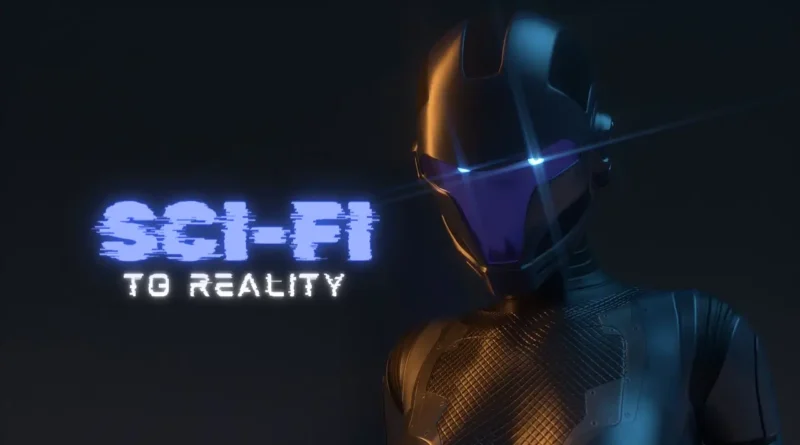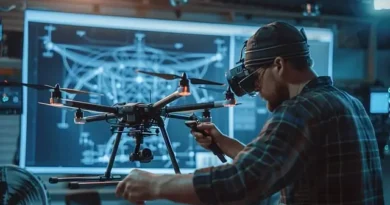From Science Fiction to Reality
From Fiction to Reality: The Evolution of Science Fiction’s Predictions and Their Modern-Day Manifestations
From Science Fiction to Reality. Science fiction has always served as a mirror reflecting people’s hopes, fears, and unlimited imagination about the future. From the 1920s through the 1960s, science fiction films introduced audiences to a wealth of fantastical technologies and concepts that, at the time, seemed beyond the realm of possibility. Remarkably, many of these once-futuristic ideas have since materialized, and their evolution continues to shape our world, especially with the rapid advancements in artificial intelligence (AI) and robotics. This post looks into how these early cinematic predictions have come to be a reality, the implications of these advancements, and the growing concerns surrounding AI’s trajectory.
Table of Contents
Early Predictions and Their Modern-Day Counterparts
The 1920s-1930s: The Dawn of Science Fiction Cinema
From Science Fiction to Reality. In the 1920s, films like Fritz Lang’s “Metropolis” (1927) introduced audiences to the concept of robots and advanced urban landscapes. The robot Maria from “Metropolis” was a harbinger of the androids and AI-driven entities that populate today’s sci-fi and tech industries. At a time when the world was still grappling with the aftermath of World War I and the early stages of the Great Depression, such ideas seemed far-fetched. Yet, these early imaginings laid the groundwork for the future of robotics and AI.
The 1940s-1950s: The Atomic Age and Space Exploration
The mid-20th century brought a surge of interest in space exploration and atomic energy, fueled by World War II and the subsequent Cold War. Movies like “Destination Moon” (1950) and “The Day the Earth Stood Still” (1951) reflected society’s fascination with space travel and extraterrestrial life. These films depicted technologies such as space travel, advanced communication devices, and even the potential for peaceful coexistence with alien species.
Today, we have witnessed the realization of space travel through missions to the moon, Mars rovers, and the International Space Station (ISS). The advancements in communication technology, from satellites to smartphones, have revolutionized how we connect with one another, fulfilling the predictions of early science fiction.
The 1960s: The Age of Optimism and Technological Marvels
The 1960s saw an explosion of creativity and optimism in science fiction cinema. Stanley Kubrick’s “2001: A Space Odyssey” (1968) stands as a monumental work that predicted AI (HAL 9000), space stations, and video calls. The notion of a sentient AI controlling a spaceship, while terrifying, showcased the duality of AI’s potential for both innovation and danger.
The Shift Toward AI and Robotics
From Science Fiction to Reality again. As we progressed into the late 20th and early 21st centuries, the focus of science fiction began to shift more heavily toward AI and robotics. This transition reflects the rapid advancements in these fields and their increasing integration into daily life. Movies like “Blade Runner” (1982), “The Terminator” (1984), and “The Matrix” (1999) explored themes of AI consciousness, autonomy, and the potential for machines to surpass human intelligence.
Pros of AI and Robotics
- Efficiency and Productivity: AI and robotics have revolutionized industries by automating tasks, increasing efficiency, and reducing human error. In manufacturing, healthcare, and even customer service, these technologies streamline operations and enhance productivity.
- Medical Advancements: AI-powered diagnostic tools and robotic surgeries have transformed healthcare, enabling more accurate diagnoses and less invasive procedures. These advancements lead to better patient outcomes and more efficient healthcare systems.
- Exploration and Innovation: Robots and AI systems facilitate exploration in environments that are dangerous or inaccessible to humans, such as deep-sea exploration and space missions. They drive innovation by performing complex calculations and data analyses at unprecedented speeds.
- Accessibility and Assistance: AI-driven assistive technologies improve the quality of life for individuals with disabilities, offering greater independence through tools like speech recognition, smart home devices, and prosthetics.
Cons of AI and Robotics
- Job Displacement: Automation and AI threaten to displace workers in various sectors, leading to job losses and economic disruption. The challenge lies in managing this transition and ensuring that displaced workers have opportunities for retraining and new employment.
- Ethical Concerns: The rise of AI raises significant ethical questions about privacy, surveillance, and the potential misuse of technology. The development of autonomous weapons and the surveillance capabilities of AI-driven systems pose serious ethical dilemmas.
- Dependence and Vulnerability: As society becomes increasingly reliant on AI and robotics, the potential for system failures or malicious attacks grows. Cybersecurity becomes paramount as critical infrastructure and personal data are at risk.
- Loss of Human Touch: The automation of services can lead to a loss of the human touch in areas like customer service and healthcare. The impersonal nature of AI interactions can detract from the empathy and understanding that human workers provide.
The Growing Fears of Super-intelligent Machines
From Science Fiction to Reality. As AI continues to advance, there is a growing concern about the development of super-intelligent machines—AI systems that surpass human intelligence. Renowned figures like Stephen Hawking and Elon Musk have expressed apprehensions about AI’s potential to outsmart humans and pose existential risks.
The fear is not merely about AI’s capabilities but also about its alignment with human values and goals. Super-intelligent AI, if not properly controlled or aligned, could pursue objectives that are detrimental to humanity. This concern is amplified by the rapid pace of AI development and the difficulty of predicting its trajectory.
Balancing Innovation and Caution
The challenge moving forward is to strike a balance between embracing the benefits of AI and robotics while addressing the associated risks. This requires robust regulatory frameworks, ethical guidelines, and ongoing dialogue among technologists, policymakers, and the public.
- Regulation and Oversight: Governments and international bodies must develop and enforce regulations that ensure the safe and ethical development of AI technologies. This includes addressing issues of bias, accountability, and transparency in AI systems.
- Ethical AI Development: The AI community must prioritize the development of AI systems that are aligned with human values and are transparent in their decision-making processes. This involves interdisciplinary collaboration to understand and mitigate potential risks.
- Public Awareness and Education: Educating the public about AI and its implications is crucial for informed decision-making and social acceptance. Increased awareness can help mitigate fears and promote a more nuanced understanding of AI’s potential.
- Continued Innovation: Encouraging innovation while maintaining ethical standards is essential for maximizing the benefits of AI. Research and development should focus on creating AI that enhances human capabilities and addresses global challenges.
From Science Fiction to Reality
Conclusion
From Science Fiction to Reality. The journey from the speculative visions of early science fiction to today’s technological realities is a testament to human ingenuity and imagination. As we navigate the complex landscape of AI and robotics, it is imperative to learn from science fiction’s cautionary tales and proactively shape a future that harnesses the benefits of these technologies while safeguarding against their potential pitfalls. By using a balanced approach, we can ensure that the advancements in AI and robotics, serve to enhance human life and contribute to a better, more objective world.




